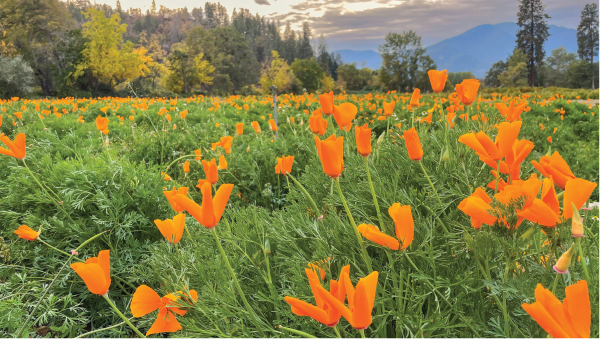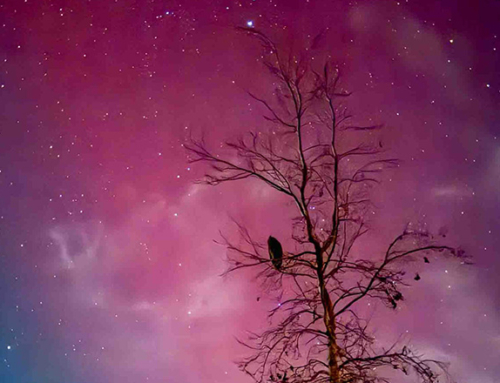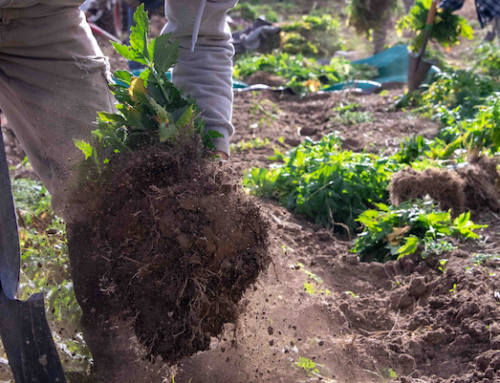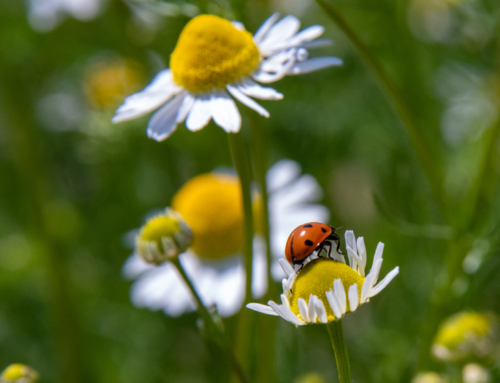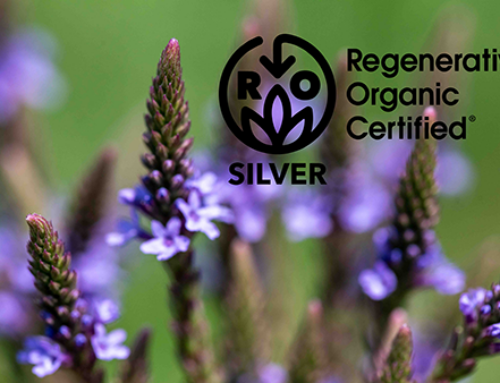Dirt on the Farm September, 2024
Dance of the Dragonfly
Dawn is the farmworker’s hour. As soon as there is enough light to see the task at hand, we start in on the hardest work of the day. We know that as the sun rises in the summer months, it’s only a matter of time until the heat becomes oppressive. Sapping our will from us regardless of our desire, it bakes away your effectiveness to accomplish the task.
Yet, during the summer months, there is no greater joy to the farmer than dusk. As the afternoon breeze transitions from high blow dryer setting to a light breeze, and the sun starts to dip behind the hillside, that is the hour of the farmer. It’s this time alone that I relish, prancing between sprinklers, changing the water from one crop to another, meandering down the rows, getting cooled by the occasional errant stream of water.
It’s easy to get lost at this time of day. Your attention drawn to the ripening seed on the Astragalus, the Mint approaching perfect harvest timing, the flush of weeds in the newly seeded California Poppy, a dry patch that may mean a clogged or broken sprinkler. The angle of light over the field catches the cacophony of life—flies flying, bees buzzing, tiny insects springing from the crop into a twister of activity spiraling into the air like a dust devil moving across the tops of the Marshmallow and Pleurisy. The sparrows swoop low and fast over the tops of the Ashwagandha and Echinacea, dive-bombing their prey. The geese, who have been honking like New York taxi drivers during rush hour in the field of freshly mowed oats, erupt in an explosion of noise. The sound of a hundred pairs of wings taking flight simultaneously—feathers on wind—followed by an assault of honking that would stop even the most hardened city dweller in their tracks.
As I turn to where they took flight, a lone coyote trots into view, looking like my dog after she scares away a squirrel—equal parts disappointed they got away and proud she scared them all the same, nose to the ground, smelling what could have been caught and what may have been left behind.
And then, as if it were a perfectly timed flash mob, they arrived. There were more than I could count—not hundreds, but hundreds of thousands, or millions even. Darting so fast I could barely make out what they were at first, moving like erratic helicopters over the field. There wasn’t an inch without them. It was certainly the most we had ever seen, more than last year, and last year was more than the year before. September was upon us, and there was no surer sign than the return of the dragonfly.
The arrival of dragonflies at Oshala Farm is more than just a seasonal event; it’s a sign of life and balance. Dragonflies are ancient creatures, existing for over 300 million years, and they play a critical role in maintaining the health of ecosystems. As natural predators, they keep insect populations in check, preying on mosquitoes, flies, and other small pests. Their presence is a gift to organic and regenerative farms like ours, helping to eliminate the need for chemical pest control and promoting a harmonious, biodiverse environment.
Regenerative organic agriculture thrives on biodiversity, and dragonflies are part of that system. By creating habitats that attract beneficial insects, we contribute to a balanced ecosystem where crops grow strong, healthy, and resilient. The fact that their numbers continue to increase is a clear indicator that our efforts to foster biodiversity and environmental health are working. Dragonflies have become a symbol of balance here at Oshala, a visible sign of the ecosystem’s resilience and vitality. As Regenerative Organic Certified® farmers our goal is to promote more insects, whether good, bad or indifferent. By creating the conditions for life to thrive we also create the conditions for beneficial life to thrive. Only through years and years of organic farming and watching the cycles of life, have we learned this important lesson. Good bugs need other bugs to eat, birds need bugs to eat, and by allowing all types of life to thrive on the farm, it is actually the farmer that benefits the most. This is the Regenerative Organic mindset to live in harmony with nature, rather than imposing our will on it. Where we do not fence out nature, or spray it into submission, but rather immerse ourselves in it’s natural rhythms.
Dragonflies spend the majority of their lives as aquatic nymphs before emerging into the dazzling winged creatures we see flitting through the air. Their dependence on clean water makes them a natural barometer for the health of water systems. At Oshala Farm, protecting our water sources is a key aspect of our land management practices. The presence of dragonflies tells us that our water, and the life it supports, remains clean and thriving.
However, as resilient as they are, dragonflies face modern threats. Habitat loss, water pollution, and pesticide use are putting certain species at risk. By supporting regenerative practices, we protect the habitats dragonflies rely on and ensure that they continue to play their vital role in the ecosystem.
By the time I stepped onto the back porch and called Elise out to join me, the sun had fallen further behind the hill. We walked out into the Echinacea field behind the house, feeling as though we were being carried by dragonflies, as they darted between our feet and skimmed around our waists and heads. The last light strikes Grayback Mountain in the distance, igniting a pink moment that would make Ojai blush. From pink to red, fading to purple, the sky and the dragonflies danced together until the light faded, and then, as quickly as they came, they were gone.
We walked back to the house in the last moments of dusk fading to dark. I noticed that the Oregon Ash had turned to yellow, and the lower leaves of its neighbor, Black Walnut, were also beginning to change. Our conversation turned to the harvests, the reality that Fall is here, and the work that needs to get done before winter sets in. There are roots to be dug, cover crops to be planted, and fields to be prepared for Winter. As we approached the porch, the familiar start of the crickets and frogs rose like a wave, moving across the fields until the entire property was enveloped in their songs. Our resident owl let out its familiar call, and our dog barked once into the enveloping darkness.
As the weeks turn into seasons and stack upon themselves into years, it is the farmer’s job to learn to listen and to follow the lessons presented in the turning leaves, the cooling breeze, and the dragonflies. The more you listen to Nature, the more she speaks to you.
